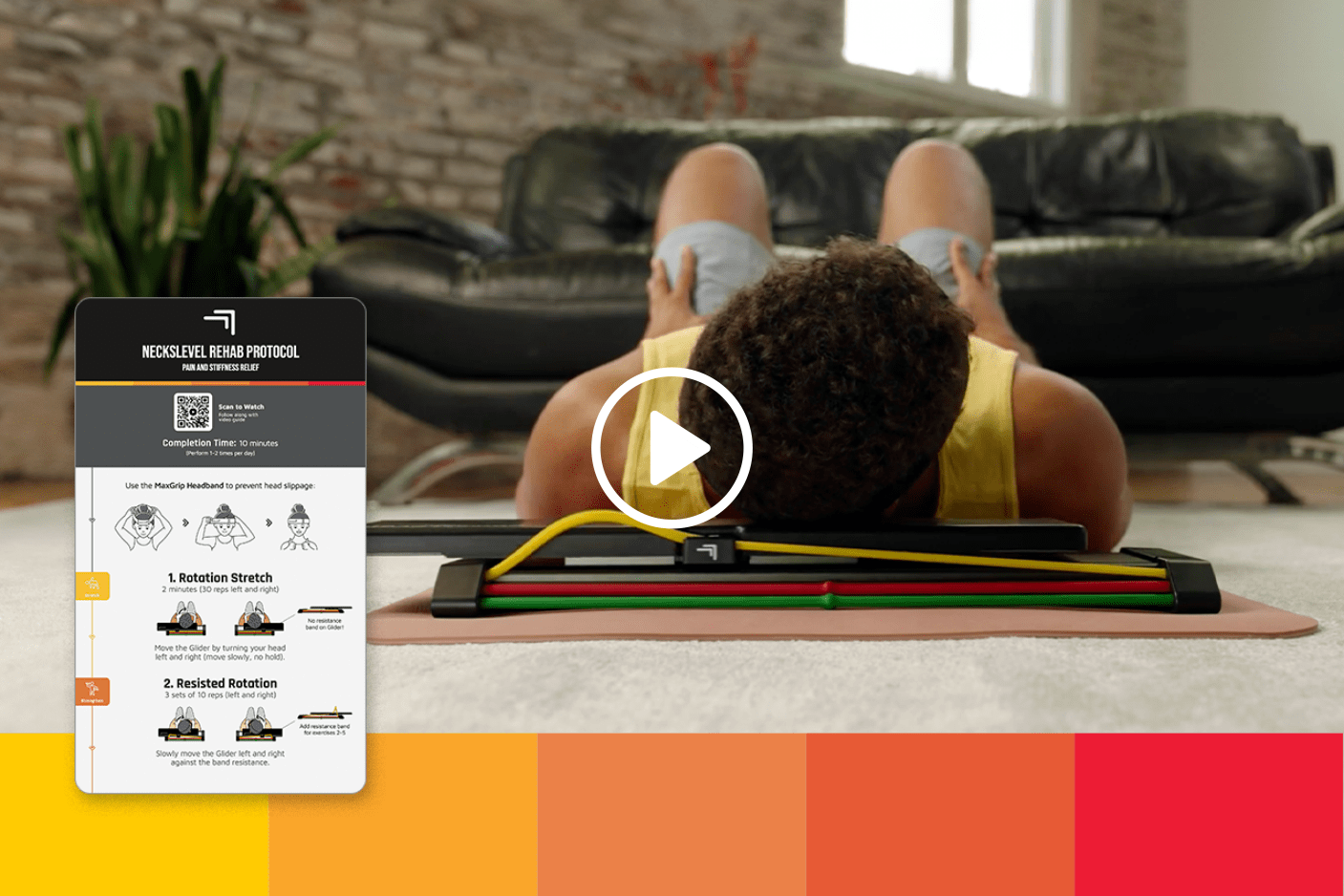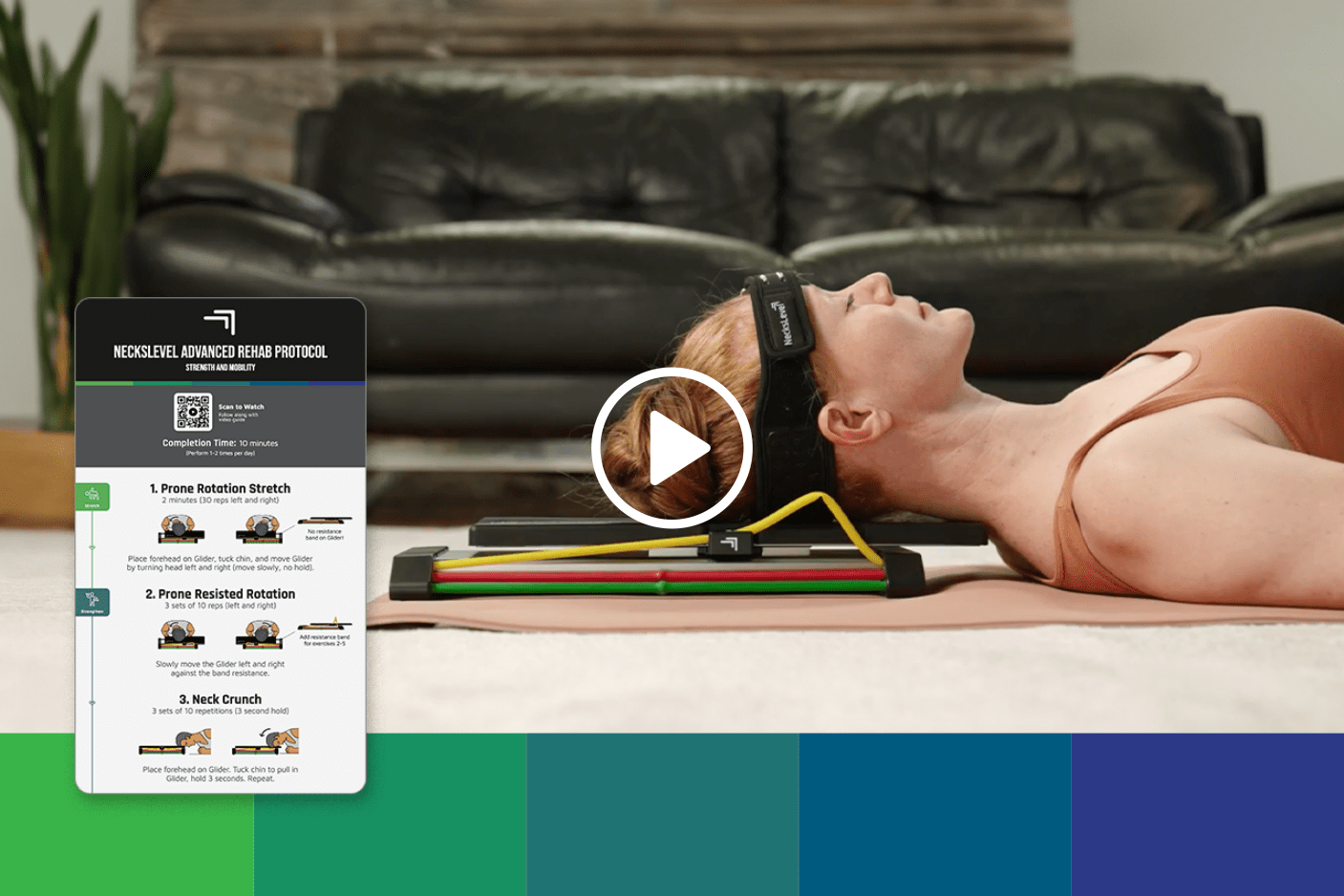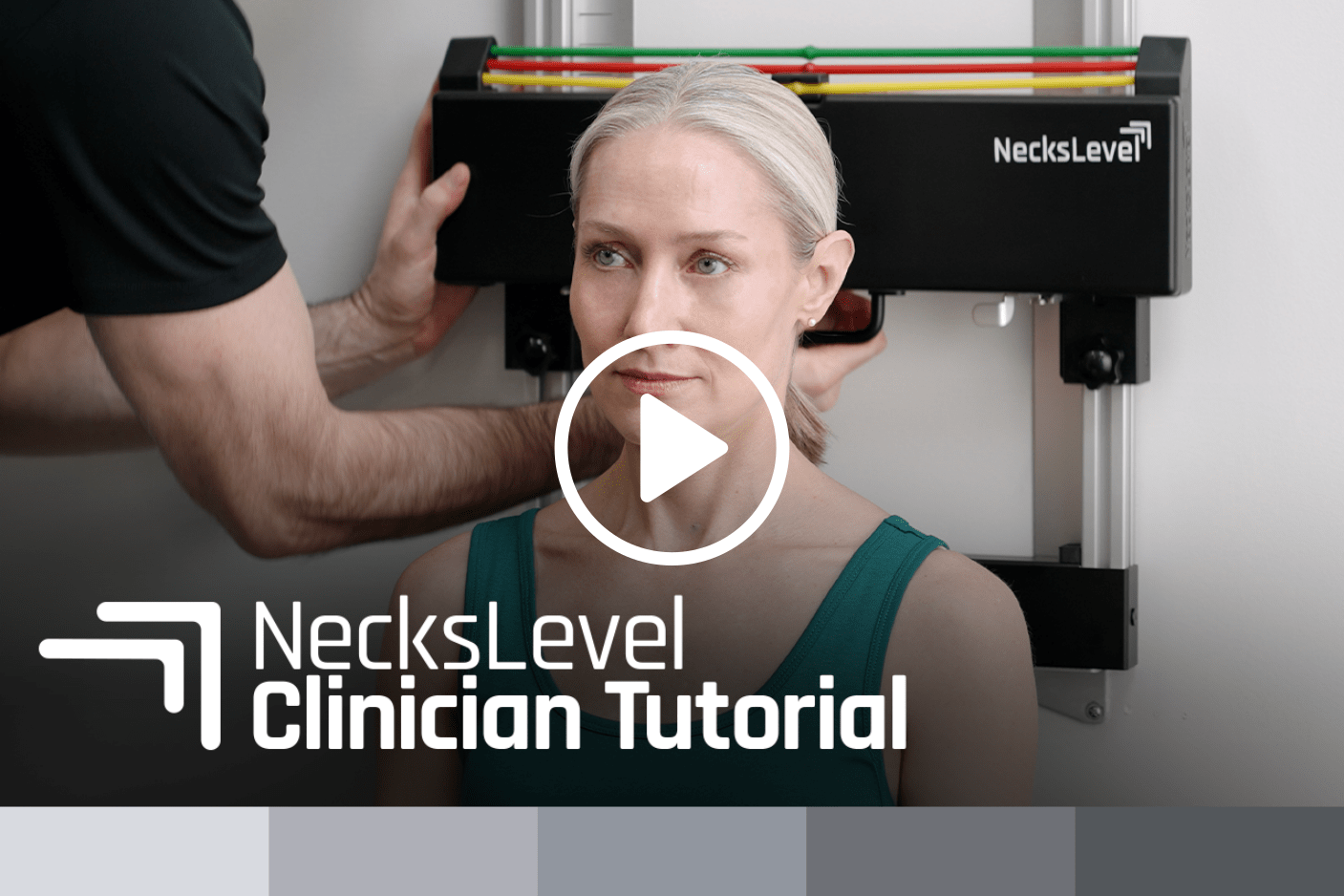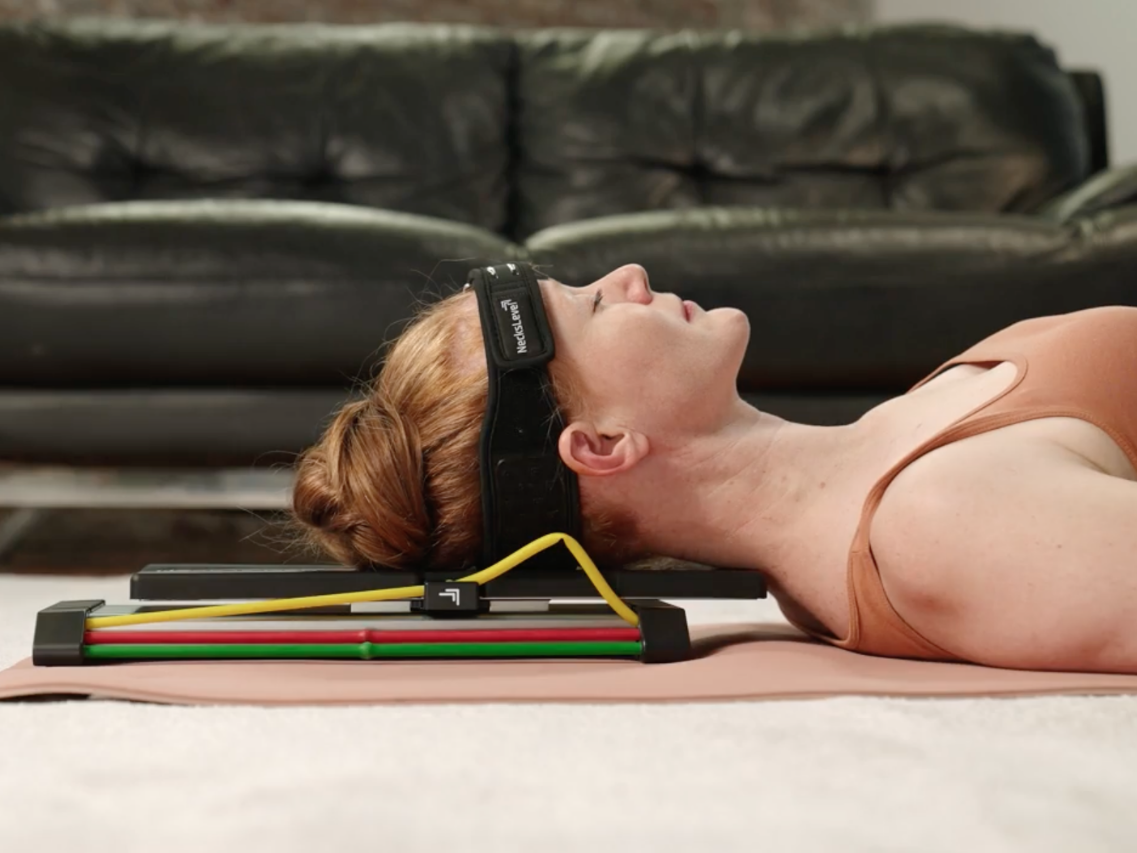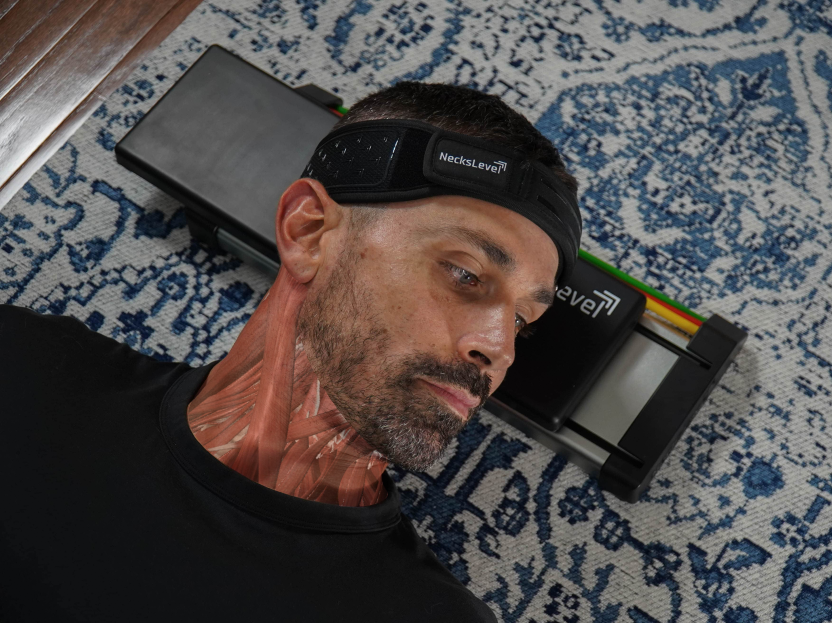Suboccipital Muscle Release | Suboccipital Headache Treatment with NecksLevel
What are the suboccipital muscles?
The suboccipitals are a group of 8 small but important muscles at the top of your neck. These muscles move your head but can also cause headaches & neck pain.

Suboccipital muscle pain:
Neck pain or headaches that start at the base of your skull
Pain at the base of the skull is related to tension & tightness in the suboccipital muscle group. These suboccipital headaches often come from neck muscle weakness, stress, & poor posture.
Want to skip to the suboccipital exercises? Click here.

Suboccipital Muscle Anatomy
The suboccipital muscles help you look up to the sky (extension) and left / right (rotation)

Rectus Capitis Posterior Major
Action: Extend (look up)
Rotation (turn left/right)

Rectus Capitis Posterior Minor
Action: Extend (look up)

Obliquus Capitis Inferior
Action: Rotation (turn left/right)

Obliquus Capitis Superior
Action: Extend (look up)
Suboccipital Release Equipment
There are a few ways to release & stretch the suboccipital muscles. The equipment that you have will determine the effectiveness & length of effects. Get whichever equipment fits your needs best. We provide two options here:

NecksLevel Glide
Pros: Long-term pain relief, more effective, easier to use
Cons: Greater financial investment
Shop Now

Peanut Massage Ball
Pros: Economical, can make at home with tennis balls
Cons: Short-term effects, awkward, less effective
Search "Peanut Massage Ball" or tape 2 tennis balls together
Option #1
Suboccipital Release:
Peanut Massage Ball

Using the peanut ball applies direct pressure to the suboccipital region and helps release the suboccipital muscles. There are two specific release techniques that we recommend (see below).
Location for Suboccipital Release:
Place Peanut Massage Ball at base of skull (near your hair line)

#1: Chin Tuck

Instructions: With peanut applying pressure to the suboccipitals, perform a small chin tuck motion to stretch out the suboccipitals with deep neck flexor training
Perform for 1-2 minutes
#2: Head Turns

Instructions: With peanut applying pressure to the suboccipitals, perform a small head turn motion right and left to stretch out the suboccipitals
Perform for 1-2 minutes
Option #2
Suboccipital Release:
NecksLevel Glide

The NecksLevel relieves suboccipital pain by both stretching & strengthening the muscles in the upper neck. This combination of therapies is needed to address the underlying causes of neck issues and provide long term relief from pain & headaches. The NecksLevel also works on the neck in multiple directions which better targets the 8 different suboccipital muscles.
#1: Chin Tuck

Instructions: With NecksLevel in line with your spine, tuck the chin & push the glider away to strecth the suboccipitals. Add a resistance band (like Level 1-Yellow seen here) for neck strengthening + stretching.
Perform for 1-2 minutes
#2: Head Turns

Instructions: With NecksLevel positioned in line with the shoulders, gently turn your head left & right through your full motion. The further you turn, the more stretch you'll feel at the base of your skull.
Perform for 1-2 minutes
#3: Traction

Instructions: With NecksLevel in line with your spine, preload the glider toward you. Lower your head and release your hand. The glider will then apply traction and stretch your suboccipitals directly.
Perform for 1-2 minutes
Shop Now
Summary: Suboccipital Release
Suboccipital pain is common and can be relieved with the right exercises
You're not alone in dealing with this suboccipital pain at the base of your skull. This headache-type pain can really impact your quality of life. For relief, begin with the simple exercises we've outlined here. Whether you use a massage ball or a NecksLevel, be consistent with the exercises daily. If after a few weeks you aren't happy with the results, consult a physical therapist or chiropractor.
Long-term suboccipital pain relief is possible
Applying pressure to the suboccipitals, like with a massage ball, is a temporary fix. For lasting results, we need to fix the underlying causes of your suboccipital pain. Most often, you have suboccipital pain because the suboccipitals are overworked while the bigger neck muscles aren't doing their job. Neck strengthening exercises, like those on the NecksLevel, will often address the source of the problem.
Your posture is another factor to consider. Being in a slouched, forward head position causes the suboccipitals to tighten over time. Try staying tall, with a slight chin tuck, to keep the suboccipitals happy and pain-free. Also, check out the tip below!
Bonus Sleep Tip:
Waking up with suboccipital pain?
Tuck your chin & keep your head in line with your shoulders when side sleeping. Sleeping in this position will help prevent night time neck pain by keeping the suboccipitals stretched.

FAQs - Suboccipital Neck Pain
What causes my suboccipital neck pain & headaches?
There a few common causes of suboccipital pain (pain at base of skull). Most often, it is a combination of weakness of other neck muscles, poor posture, and stress (lack of sleep, stressful job, etc).
What's the fastest way to get rid of suboccipital muscle pain?
Getting started on the right exercise program is the fastest way to relieve suboccipital pain. A combination of pressure (massage or massage ball) and stretching & strengthening exercises on the NecksLevel is the ideal way to get relief fast.
Consult a medical professional, like a physical therapist or chiropractor, for a formal evaluation & treatment program.
What are the best exercises to relieve suboccipital muscle pain?
Click here for the best exercises for long-term suboccipital pain relief.
How does the NecksLevel help suboccipital pain & suboccipital headaches?
Exercises on the NecksLevel Glide and Glide Pro address the core issues causing suboccipital pain. Weakness & tightness in the neck puts stress on the suboccipitals which leaves you in pain. The right neck strengthening and stretching program on a device like the NecksLevel lets you be your own physical therapist and improve your neck by yourself.
Written by:

Dr. Scott Dickenson, DPT, ATC
Physical Therapist
Scott is an Orthopedic Physical Therapist specializing in neck pain with nearly a decade of clinical experience. He regularly speaks at national Physical Therapy, Athletic Training, & Chiropractic conferences on neck injuries & rehab in sport.
NecksLevel Glide
"Like having a Physical Therapist in your home"
Professional neck strengthening and stretching in one compact device. Relieve neck pain while reducing neck stiffness & improving your posture.
Shop Now



